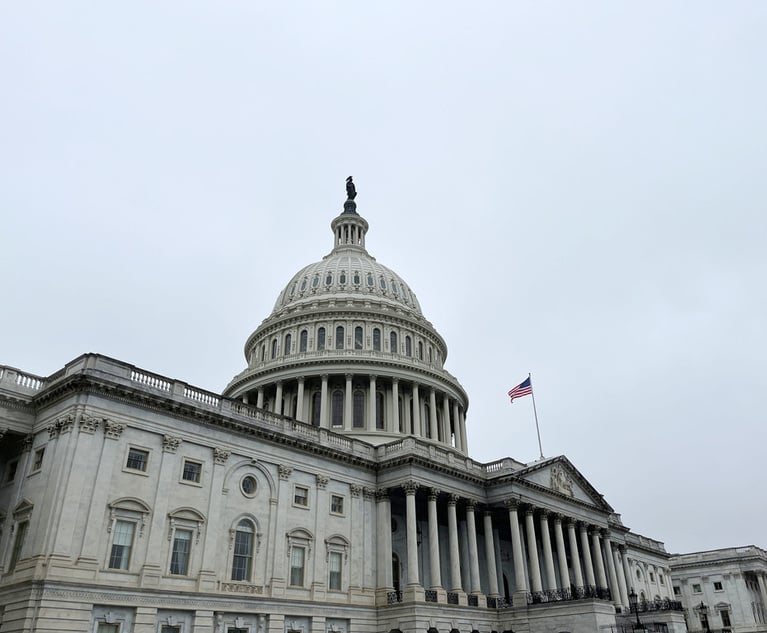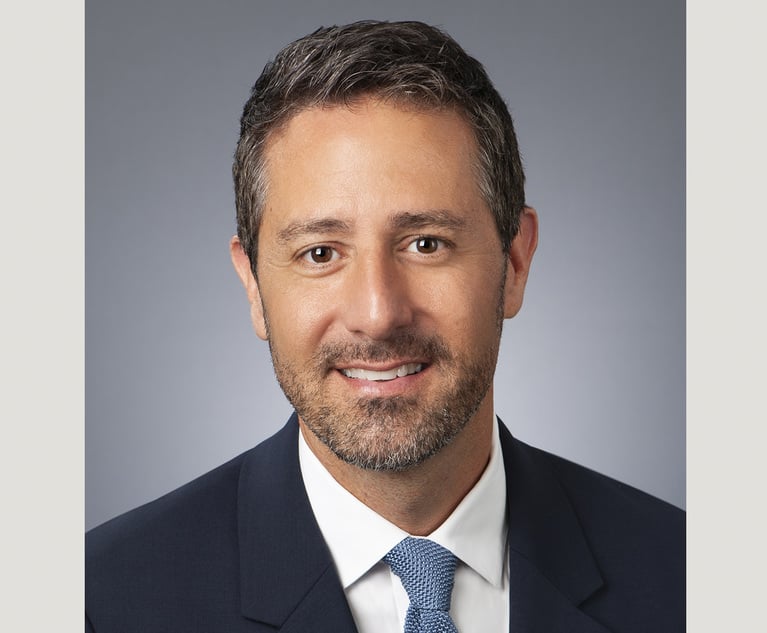Grand Openings: Where U.S. Law Firms Are Setting Up Abroad
U.S. firms have added thousands of foreign lawyers in the past decade. Where are they focused, and why?
September 24, 2019 at 05:30 AM
6 minute read

In the decade since the Great Recession, the largest U.S. law firms have mirrored their global clients, spreading their footprint in an effort to bring in more business. In doing so, they've opened offices from Sheffield to Shanghai and everywhere in between, adding thousands of international attorneys, with some firms focused on operating in key financial centers, and others looking to open in as many locales as possible.
A review of 10 years of data for the 2019 Am Law 200 firms shows that the 110 firms on the list with international lawyers have added 6,626 lawyers and 198 offices outside the United States, when accounting for mergers, openings, closings, hirings and departures. (Firms without 2009 data available were not included.) That amounts to an 8% increase in offices around the world and 35% growth in global lawyers employed by the biggest U.S. firms.
One-third of all those new lawyers can be found in London, far and away the biggest driver of U.S. firms' international growth. That leap in head count matches the growth of the next seven busiest cities combined: Paris, Hong Kong, Sydney, Mexico City, Singapore, Milan and Melbourne. (View an infographic breakdown of the data at the bottom of this page.)
"There's a lot of things going for American firms over there, not least of which is there's so much commonality of interest between the United States and the U.K.," Joseph Altonji, founding principal of law firm consultancy Law Vision, says. "Pretty much every transaction on the planet is done in U.S. or U.K. law, so if you're a significant player, you want a presence in both markets."
The Am Law 200 now have 81 offices in London, 15 more than they did in 2009. The only city with a larger influx of U.S. offices is Seoul, which has added 18 offices among the Am Law 200 since a free trade agreement with the United States opened the market in 2012. Those offices hold just 68 lawyers, though, a stark contrast to London's droves of attorneys. Indigenous Korean firms hold sway over clients, and full liberalization of legal practice has yet to arrive, making it a difficult market to penetrate, Tony Williams of Jomati Consultants says.
"Firms took the view they couldn't not join in, but the fact that everybody joins in doesn't necessarily mean it's the best business decision," Williams says.
Shanghai (12 new offices), Beijing (11), Dubai (10) and Hong Kong (nine) join London and Seoul as the fastest-growing cities. The 32 new offices in China raise its total to 140, split equally among Hong Kong, Beijing and Shanghai. But Hong Kong is home to more than two-thirds of the 2,553 lawyers spread across the cities, and saw more than three-quarters of the growth, adding 446 lawyers in the past decade.
"There is a sense that you have to be there and you have to be there in some credible way," Altonji says of China, "but what that means can vary dramatically."
An expanding China presence has been a major thread in U.S. firms' recent international growth, but as the global chairman of a U.S. law firm made clear in this magazine four years ago, success there is in the eye of the beholder. His firm's strategy, he said, was simple: "to lose less money than any other U.S. firm in China."
Seventeen cities have more than doubled their cohort of Am Law 200 lawyers in the past decade, paced by Perth, Australia, which had just one lawyer in 2009 but now boasts 149. Sydney, now home to 316 lawyers among the Am Law 200, Melbourne (204) and Brisbane (103, all new) have also more than doubled as U.S. interest in Australia has grown.
Mexico City has seen a 175% increase in U.S. firms' presence, swelling to 486 lawyers. And in South America, Bogota, Lima and Rio de Janeiro have each seen over 250% growth.
No firm has been more active in opening international offices than immigration-focused Fragomen, which has opened 20 new offices to grow its collection to 27. Squire Patton Boggs (12 new offices), Baker McKenzie (11), Quinn Emanuel Urquhart & Sullivan (10) and K&L Gates (nine) have also rapidly expanded their footprints.
John Quinn, co-founder of Quinn Emanuel, describes his firm's global growth strategy as "opportunistic," guided more by lawyers than locations.
"Our new offices are driven by the desire to recruit particular talent," he says, rather than to be in a particular city.
Law firms have largely begun to take "a far more businesslike approach" to international growth, Williams says.
With profitability climbing ever higher in cities across the United States, the calculus has changed for those thinking of opening up a new office abroad.
"It has raised the bar for their investments around the world," Williams says. "Why would we go to a market where we can't get the same profitability we can in the U.S.?"
For some firms, the quest to obtain work in the most profitable cities has made such locations as Paris, Hong Kong, Frankfurt, Brussels and London popular destinations for office openings (38 among them). Meanwhile, other firms are busy chasing down clients that need firms that operate across the globe, making more far-flung locations attractive. It's the latter group that will keep expansion going in the coming years, Altonji says.
"If you're really trying to just stay with the financial centers of the world, I suspect most firms playing to that strategy have accomplished most of the office openings they need to," he says. "But if your goal is to be a global service provider to major corporations across a broad spectrum of legal work, then you don't stop at the international financial centers."
For his part, Quinn has no trouble identifying the guiding principle that explains the international growth of the past decade and where it's taken place—and where it might go from here.
"It's economics," he says. "Where are the clients? Where is the wealth?"
Email: [email protected]. Ben Hancock contributed to this report.
Infographic credit: Roberto Jimenez
This content has been archived. It is available through our partners, LexisNexis® and Bloomberg Law.
To view this content, please continue to their sites.
Not a Lexis Subscriber?
Subscribe Now
Not a Bloomberg Law Subscriber?
Subscribe Now
NOT FOR REPRINT
© 2025 ALM Global, LLC, All Rights Reserved. Request academic re-use from www.copyright.com. All other uses, submit a request to [email protected]. For more information visit Asset & Logo Licensing.
You Might Like
View All
'Ridiculously Busy': Several Law Firms Position Themselves as Go-To Experts on Trump’s Executive Orders
5 minute read
Holland & Knight Hires Former Davis Wright Tremaine Managing Partner in Seattle
3 minute read
Am Law 200 Firms Announce Wave of D.C. Hires in White-Collar, Antitrust, Litigation Practices
3 minute read
Paul Hastings Hires Music Industry Practice Chair From Willkie in Los Angeles
Trending Stories
Who Got The Work
J. Brugh Lower of Gibbons has entered an appearance for industrial equipment supplier Devco Corporation in a pending trademark infringement lawsuit. The suit, accusing the defendant of selling knock-off Graco products, was filed Dec. 18 in New Jersey District Court by Rivkin Radler on behalf of Graco Inc. and Graco Minnesota. The case, assigned to U.S. District Judge Zahid N. Quraishi, is 3:24-cv-11294, Graco Inc. et al v. Devco Corporation.
Who Got The Work
Rebecca Maller-Stein and Kent A. Yalowitz of Arnold & Porter Kaye Scholer have entered their appearances for Hanaco Venture Capital and its executives, Lior Prosor and David Frankel, in a pending securities lawsuit. The action, filed on Dec. 24 in New York Southern District Court by Zell, Aron & Co. on behalf of Goldeneye Advisors, accuses the defendants of negligently and fraudulently managing the plaintiff's $1 million investment. The case, assigned to U.S. District Judge Vernon S. Broderick, is 1:24-cv-09918, Goldeneye Advisors, LLC v. Hanaco Venture Capital, Ltd. et al.
Who Got The Work
Attorneys from A&O Shearman has stepped in as defense counsel for Toronto-Dominion Bank and other defendants in a pending securities class action. The suit, filed Dec. 11 in New York Southern District Court by Bleichmar Fonti & Auld, accuses the defendants of concealing the bank's 'pervasive' deficiencies in regards to its compliance with the Bank Secrecy Act and the quality of its anti-money laundering controls. The case, assigned to U.S. District Judge Arun Subramanian, is 1:24-cv-09445, Gonzalez v. The Toronto-Dominion Bank et al.
Who Got The Work
Crown Castle International, a Pennsylvania company providing shared communications infrastructure, has turned to Luke D. Wolf of Gordon Rees Scully Mansukhani to fend off a pending breach-of-contract lawsuit. The court action, filed Nov. 25 in Michigan Eastern District Court by Hooper Hathaway PC on behalf of The Town Residences LLC, accuses Crown Castle of failing to transfer approximately $30,000 in utility payments from T-Mobile in breach of a roof-top lease and assignment agreement. The case, assigned to U.S. District Judge Susan K. Declercq, is 2:24-cv-13131, The Town Residences LLC v. T-Mobile US, Inc. et al.
Who Got The Work
Wilfred P. Coronato and Daniel M. Schwartz of McCarter & English have stepped in as defense counsel to Electrolux Home Products Inc. in a pending product liability lawsuit. The court action, filed Nov. 26 in New York Eastern District Court by Poulos Lopiccolo PC and Nagel Rice LLP on behalf of David Stern, alleges that the defendant's refrigerators’ drawers and shelving repeatedly break and fall apart within months after purchase. The case, assigned to U.S. District Judge Joan M. Azrack, is 2:24-cv-08204, Stern v. Electrolux Home Products, Inc.
Featured Firms
Law Offices of Gary Martin Hays & Associates, P.C.
(470) 294-1674
Law Offices of Mark E. Salomone
(857) 444-6468
Smith & Hassler
(713) 739-1250










